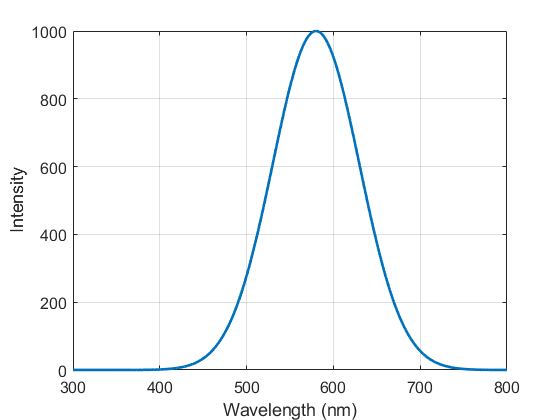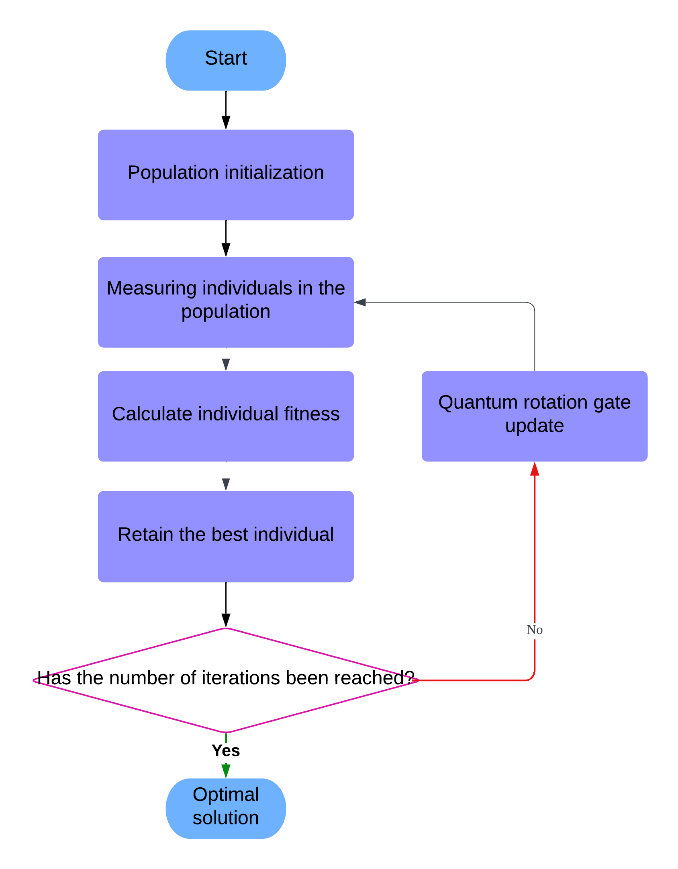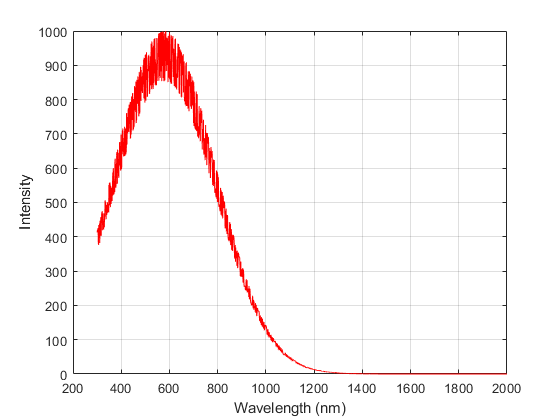1. Introduction
Windows, despite their transparency and functional versatility, are notably weaker in heat preservation and thermal insulation compared to walls and roofs. The trend toward designing larger windows for aesthetic and spatial reasons, often covering entire walls, has led to increased solar radiation entering buildings. This, in turn, escalates energy consumption, particularly due to the heightened use of air conditioning systems [1]. As energy efficiency becomes a priority, improving the thermal properties of windows is recognized as a cost-effective and practical solution.
Current Research Status: Enhancing the thermal performance of windows has been the subject of considerable research. Liu (2006) highlighted the effectiveness of Double-Skin Facades (DSF) in increasing energy efficiency in buildings and suggested further research to optimize these systems for better resource conservation [2]. However, traditional genetic algorithms (GA) face challenges in optimizing complex multilayer structures, such as those encountered in Grazing Incidence X-ray Reflection (GIXR) analysis of Si single layers and periodic Mo/Si multilayers, due to slow convergence, low accuracy, and susceptibility to local optima [3]. In contrast, the quantum-inspired genetic algorithm (QIGA) offers significant advantages, including faster solving speeds and higher precision, making it particularly suitable for analyzing thin film parameters in complex multilayers.
This study focuses on optimizing the thickness of triple-glazed windows to minimize sunlight penetration, specifically for applications in southern China during summer. The research employs the quantum-inspired genetic algorithm (QIGA) due to its superior performance in handling complex optimization problems. The paper will detail the modeling of the triple-glazed window system, the principles of reflection and transmission in glass, the optimization process using QIGA, and the anticipated outcomes of this research. The goal is to demonstrate that triple-glazed windows can significantly reduce solar transmission, thereby lowering building energy consumption and contributing to energy-saving efforts [4].
2. Relevant Theories
2.1. Triple-glazed system modeling
To optimize the thickness of the triple-glazed system, a simplified model is established. When sunlight ( \( {I_{i}} \) ) hits the interface between the glass and the air, part of the light is reflected ( \( {I_{r}} \) ), while the other part is transmitted into the glass ( \( {I_{t}} \) ). According to the principles of light reflection and transmission at interfaces, the proportion of reflected light depends on the difference in refractive indices of the two media at the interface.
First, the reflection coefficient \( R \) can be derived using the classical Fresnel equation. For normal incidence, the reflection coefficient \( R \) is calculated as:
\( R={(\frac{{n_{1}}-{n_{0}}}{{n_{1}}+{n_{0}}})^{2}} \) (1)
Where \( {n_{0}} \) is the refractive index of air, set to 1.0, and \( {n_{1}} \) is the refractive index of glass, set to 1.5.
Next, the transmittance for each glass layer is expressed as:
\( {T_{i}}(λ)=\frac{{(1-R)^{2}}}{{(1-R)^{2}}+4R{sin^{2}}{(\frac{2π{n_{1}}{L_{i}}}{λ})}} \) (2)
Where λ is the wavelength, \( {L_{i}} \) is the thickness of the \( ith \) glass layer, and \( {n_{1}} \) is the refractive index of glass. This formula is derived by considering the phase changes caused by multiple reflections and transmissions at the interfaces, along with the interference effects between reflected and transmitted light. As show in the figure 1.

Figure 1. Solar Spectrum Simulation Plot (Photo credit: Original).
To calculate the total transmitted solar energy through the triple-glazed system, the solar spectrum distribution needs to be simulated first. The solar spectrum can be approximated by a Gaussian distribution, and the intensity \( I(λ) \) as a function of wavelength is given by:
\( I(λ)={I_{0}}exp(-\frac{{(λ-{λ_{0}})^{2}}}{2{σ^{2}}}) \) (3)
Where \( {I_{0}}= 1000 \) represents the maximum intensity, \( {λ_{0}}=580×{10^{-9}} \) meters is the central wavelength of the spectrum, and \( σ \) is the standard deviation, related to the full width at half maximum (FWHM) of the spectrum. The relationship between \( σ \) and FWHM is:
\( σ=\frac{FWHM}{2\sqrt[]{2ln2}} \) (4)
With \( FWHM=500×{10^{-9}} \) meters. This formula calculates the variation in spectral intensity according to the Gaussian distribution.
Considering the transmittance of each glass layer and the intensity of the spectrum, the total transmitted intensity \( {I_{total}} \) can be obtained by summing the weighted intensities across all wavelengths:
\( {I_{total}}=\sum _{λ}I(λ)×{T_{1}}(λ)×{T_{2}}(λ)×{T_{3}}(λ) \) (5)
This formula represents the total transmitted solar energy inside the building, calculated by multiplying the spectral intensity \( I(λ) \) by the transmittance of each layer and then summing over all wavelengths.
To perform optimization, the fitness function \( f(x) \) is defined as the total transmitted energy through the triple-glazed system:
\( f(x)={I_{total}}({L_{1}},{L_{2}},{L_{3}}) \) (6)
Where \( x \) is the encoded individual representing the thicknesses \( {L_{1}}, {L_{2}}, {L_{3}} \) of the three glass layers. The optimization objective is to find the optimal combination of \( {L_{1}}, {L_{2}}, {L_{3}} \) that minimizes the fitness function \( f(x) \) , thereby reducing the total transmitted solar energy.
2.2. Quantum genetic algorithm implementation

Figure 2. Quantum Genetic Algorithm Flowchart (Photo credit: Original).
As show in the figure 2. The specific design steps of the Quantum Genetic Algorithm (QGA) in this paper unfold as follows:
First, during population initialization, the encoding of each individual is represented by a set of quantum bits, where each quantum bit can simultaneously exist in a superposition state of 0 and 1. In the actual implementation, the `InitPop. m` function is used to generate the initial population. Here, `sizepop` represents the population size, and `sum (lenchrom)` represents the total length of each individual's encoding. The population consists of twice the number of individuals, allowing more flexibility in updating the quantum state of each individual during the quantum rotation gate operation.
Next, by measuring the quantum bits, specific binary encodings are obtained. The `collapse. m` function is used to "collapse" the quantum bit states into specific binary values. Each quantum bit has a 50% probability of becoming 0 or 1, which helps avoid early convergence to local optima. Subsequently, the `bin2decFun.m` function converts these binary encodings into corresponding glass thickness values. This function decodes the binary encoding into actual thickness values based on the binary encoding length of each glass layer (`lenchrom`) and the preset upper and lower bounds of thickness.
Moreover, the fitness function is used to evaluate the quality of each individual. The `FitnessFunction. m` function calculates the fitness value of each individual, which represents the solar energy transmitted indoors. The smaller the fitness value, the better the insulation performance of the thickness combination, leading to a higher fitness. The fitness calculation formula is based on a physical model, considering glass thickness, material properties, and solar radiation, ensuring that the result reflects the actual energy-saving performance of the building.
In addition, the quantum rotation gate is a key operation in QGA, used to update the probability amplitude of quantum bits to achieve population evolution [5]. The `Qgate. m` function implements the logic of the quantum rotation gate, dynamically adjusting the quantum bit's rotation angle based on the fitness of the current individual and the global optimal individual. This update method allows QGA to effectively explore the solution space, ensuring diversity while gradually converging to the global optimum.
Finally, at the end of each generation, individuals with the highest fitness are selected as the basis for the next generation. This process involves evaluating the fitness of all individuals in the population and performing selection based on fitness [6]. Throughout the evolutionary process, QGA dynamically adjusts the state of quantum bits, continuously optimizing the thickness combination of each glass layer until either the preset maximum number of generations (`MAXGEN`) is reached or a sufficiently good solution is found.
After multiple generations of evolution, the optimal solution is finally obtained, which includes the best thickness combination of the glass layers and the corresponding minimum transmitted energy. By analyzing these results, the building’s window design can be further optimized to enhance energy-saving performance.
3. Optimization Results and Discussion
3.1. Parameter selection
The wavelength between 400-800nm has higher intensity by observing Figure3, so how to reduce the solar transmission between this interval is significant. By using QIGA, the thickness of triple-glazed is given. Then, figure out wavelength-intensity relationship again (Figure4) comparing with Figure3. It is obvious that the total energy reach into the room is decreased and the intensity of other wavelength is not increase [7]. As a result, the findings successfully decline the sunlight through windows and could satisfy the demand in southern area in China in summer. As show in the figure 3 and figure 4.

Figure 3. Simulation of the normal distribution of the solar spectrum before optimization (Photo credit: Original).

Figure 4. Simulation of the normal distribution of the solar spectrum after optimization (Photo credit: Original).
3.2. Pre-and post-optimization comparison
This research explore how to design the thickness of triplex glass in order to decrease the transmission sunlight by using quantum genetic algorithm (QGA). The research data indicate that the thickness of every glass is critical. For example, fix the number of two layer glasses and change the third glass’s thickness during a small interval. Then, comparing the total energy reaching into the inside. There is a big difference among them. Therefore, finding the fittest result for triple-glazed window is complicated enough.
Such problem belongs to multi-objective optimization problems mean that researchers should optimize two or more targets at the same time to achieve the research goals. Moreover, QGA is not the only way to solve such problems. Particle swarm optimization algorithm (PSO) has the advantages of fast search speed and high efficiency [8]. By comparing the result of unit combination optimization problem, a method combining GA and PSO improves the local search capacity of the algorithm and enhance the convergence speed and match the constraints of energy-saving and emission-reduction that successfully fulfills the requirements of achieving multiple objective functions and proves a good performance of hybrid intelligent optimization algorithm [9]. Additionally, Cellular genetic algorithm (CGA) formed by the GA and cellular automata (CA) has great optimization performance when deal with classical combinatorial optimization questions [10]. In brief, the method by combining of GA and other algorithm can better resolve multi-objective optimization problems in a shorter time and higher accuracy.
4. Challenges
The QGA has certain limits. Firstly, due to the possibility of quantum genetic algorithms getting stuck in local optima during the search process, it may fail to obtain the global optimum solution. This is because the multiple universes in the algorithm are generated by producing different populations separately and do not directly utilize quantum states, thus still falling within the scope of conventional genetic algorithms and carrying the risk of getting trapped in local optima. Secondly, quantum genetic algorithms incur high time costs, requiring a large number of samples for solving, as the algorithm necessitates more iterations and computational processes while exploring the solution space. Lastly, the encoding scheme and evolution strategy of quantum gates lack universality, especially when all individuals evolve towards a single target; without crossover operations, there is a high probability of getting stuck in local optima.
There are several potential limits for the study. For example, the ability of glass materials is not enough to block the specific wavelengths of sunlight. To solve these problems, there are two ways to carry out. Firstly, new glass materials can be explored to enhance their ability to block specific wavelengths of sunlight. Secondly, it is possible to consider adding optical coatings on glass to reduce the transmittance of specific wavelengths of sunlight for improvement.
5. Conclusion
This study successfully applied the quantum genetic algorithm (QGA) to optimize the thicknesses of a three-layer glass system, aiming to minimize the energy of sunlight reaching indoors across wavelengths from 300 to 2000nm. The optimal configuration, with thicknesses of 8.71mm, 9.47mm, and 6.46mm for the three glass layers, respectively, demonstrated the best performance in reducing solar energy transmission. The findings highlight the significant impact of precise glass thickness design on energy efficiency and indoor comfort, offering a practical solution for balancing lighting and shading needs in architectural physics. Moreover, this study broadens the application scope of QGA, showcasing its effectiveness in solving complex optimization problems within the building industry.
Further research is necessary to adapt the design of three-layer glass systems to varying application scenarios, production processes, and glass materials. Additionally, exploring the potential use of coating techniques on the glass surface and refining the methods for splicing glass layers together will be critical to enhancing the overall performance of these systems. These areas of study will continue to bridge the gap between building physics and intelligent algorithms, contributing to the advancement of energy-efficient building materials and technologies.
Authors Contribution
All the authors contributed equally and their names were listed in alphabetical order.
References
[1]. Zhang, W. (2003). Research on energy-saving design of exterior windows of residential buildings. Dissertation, Zhejiang University.
[2]. Liu, J. (2006). Research on energy-saving design of double-layer glass curtain wall. Dissertation, Tsinghua University.
[3]. Zhou, X., Zhang, C., Kuang, S., & others. (2017). Structural analysis of optical thin films based on quantum-derived genetic algorithm. China Laser, 44(12), 137-144.
[4]. Yu, Y. (2020). Research on grid unit combination optimization based on hybrid intelligent algorithm. Dissertation, North China Electric Power University. https://doi.org/10.27139/ d. cnki. ghbdu.2020.000563.
[5]. Deng, Y. (2022). Research on the application of cellular genetic algorithm in combinatorial optimization problems. Dissertation, Guangxi University for Nationalities. https://doi.org/10. 27035/d.cnki.ggxmc.2022.000096.
[6]. Zhu, X., Xu, H., Zhao, Z., & others. (2021). An environmental intrusion detection technology based on WiFi. Wireless Personal Communications, 119(2), 1425-1436.
[7]. Zhang, C., Heiselberg, P., Kolokotroni, M., Salvati, A., Arghand, T., Javed, S., ... & Sodagar, B. (2022). International Energy Agency EBC Annex 80-Resilient Cooling of Buildings-State of the Art Review.
[8]. Peuportier, B., & Schalbart, P. (2023). Life cycle assessment applied to the eco-design of urban projects in France. In the Routledge Handbook of Embodied Carbon in the Built Environment (pp. 242-259). Routledge.
[9]. Nogalski, B. (2020). The future of management: Industry 4.0 and digitalization. Wydawnictwo UJ.
[10]. Lyu, M. (2023). 3D multimodality solar harvesting and energy generation system. Dissertation, University of Cincinnati.y
Cite this article
Jiang,C.;Xiong,W.;Zhao,Z. (2024). Quantum Genetic Algorithm-Driven Optimization of Triple-Glazed Window Thickness for Enhanced Light Reduction. Applied and Computational Engineering,94,123-129.
Data availability
The datasets used and/or analyzed during the current study will be available from the authors upon reasonable request.
Disclaimer/Publisher's Note
The statements, opinions and data contained in all publications are solely those of the individual author(s) and contributor(s) and not of EWA Publishing and/or the editor(s). EWA Publishing and/or the editor(s) disclaim responsibility for any injury to people or property resulting from any ideas, methods, instructions or products referred to in the content.
About volume
Volume title: Proceedings of CONF-MLA 2024 Workshop: Securing the Future: Empowering Cyber Defense with Machine Learning and Deep Learning
© 2024 by the author(s). Licensee EWA Publishing, Oxford, UK. This article is an open access article distributed under the terms and
conditions of the Creative Commons Attribution (CC BY) license. Authors who
publish this series agree to the following terms:
1. Authors retain copyright and grant the series right of first publication with the work simultaneously licensed under a Creative Commons
Attribution License that allows others to share the work with an acknowledgment of the work's authorship and initial publication in this
series.
2. Authors are able to enter into separate, additional contractual arrangements for the non-exclusive distribution of the series's published
version of the work (e.g., post it to an institutional repository or publish it in a book), with an acknowledgment of its initial
publication in this series.
3. Authors are permitted and encouraged to post their work online (e.g., in institutional repositories or on their website) prior to and
during the submission process, as it can lead to productive exchanges, as well as earlier and greater citation of published work (See
Open access policy for details).
References
[1]. Zhang, W. (2003). Research on energy-saving design of exterior windows of residential buildings. Dissertation, Zhejiang University.
[2]. Liu, J. (2006). Research on energy-saving design of double-layer glass curtain wall. Dissertation, Tsinghua University.
[3]. Zhou, X., Zhang, C., Kuang, S., & others. (2017). Structural analysis of optical thin films based on quantum-derived genetic algorithm. China Laser, 44(12), 137-144.
[4]. Yu, Y. (2020). Research on grid unit combination optimization based on hybrid intelligent algorithm. Dissertation, North China Electric Power University. https://doi.org/10.27139/ d. cnki. ghbdu.2020.000563.
[5]. Deng, Y. (2022). Research on the application of cellular genetic algorithm in combinatorial optimization problems. Dissertation, Guangxi University for Nationalities. https://doi.org/10. 27035/d.cnki.ggxmc.2022.000096.
[6]. Zhu, X., Xu, H., Zhao, Z., & others. (2021). An environmental intrusion detection technology based on WiFi. Wireless Personal Communications, 119(2), 1425-1436.
[7]. Zhang, C., Heiselberg, P., Kolokotroni, M., Salvati, A., Arghand, T., Javed, S., ... & Sodagar, B. (2022). International Energy Agency EBC Annex 80-Resilient Cooling of Buildings-State of the Art Review.
[8]. Peuportier, B., & Schalbart, P. (2023). Life cycle assessment applied to the eco-design of urban projects in France. In the Routledge Handbook of Embodied Carbon in the Built Environment (pp. 242-259). Routledge.
[9]. Nogalski, B. (2020). The future of management: Industry 4.0 and digitalization. Wydawnictwo UJ.
[10]. Lyu, M. (2023). 3D multimodality solar harvesting and energy generation system. Dissertation, University of Cincinnati.y









